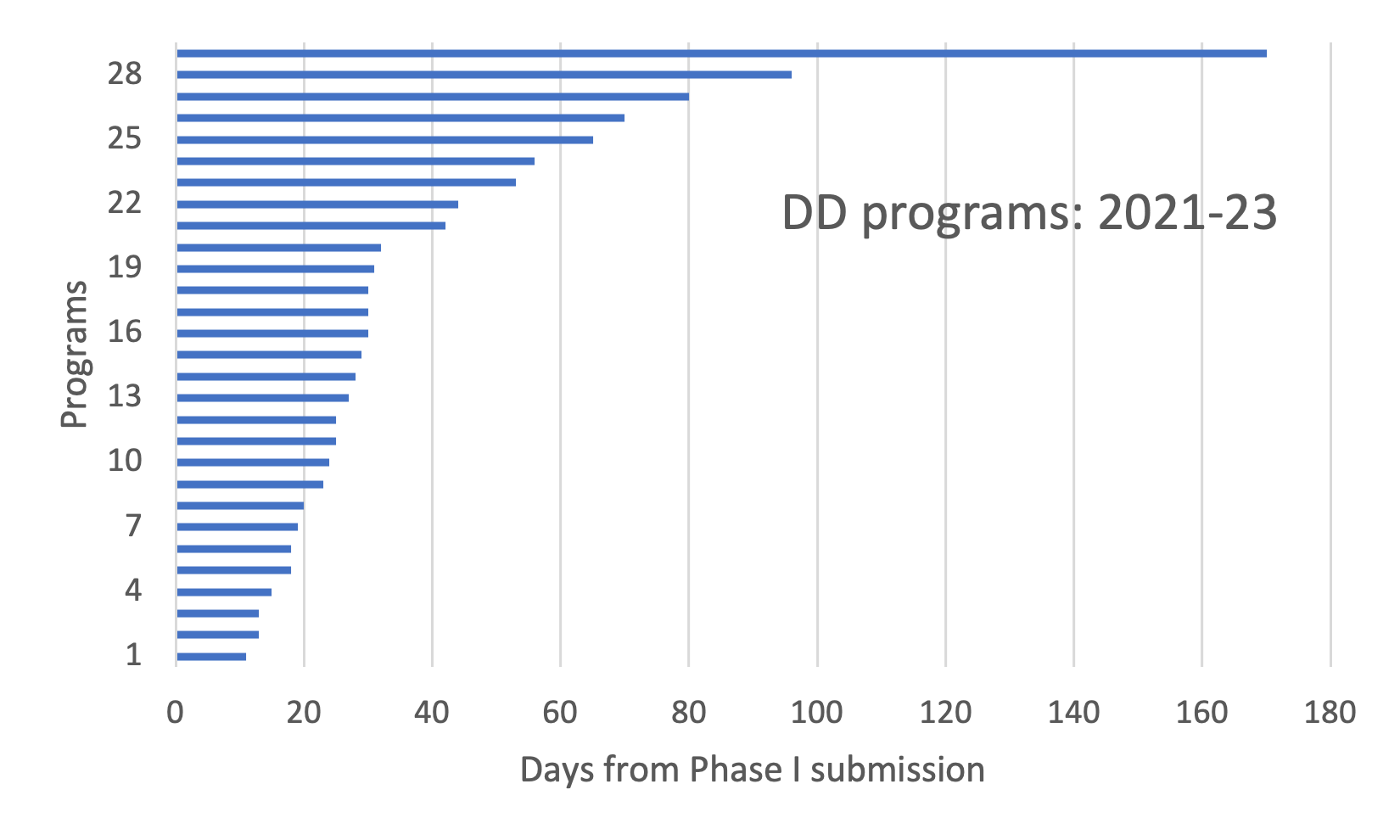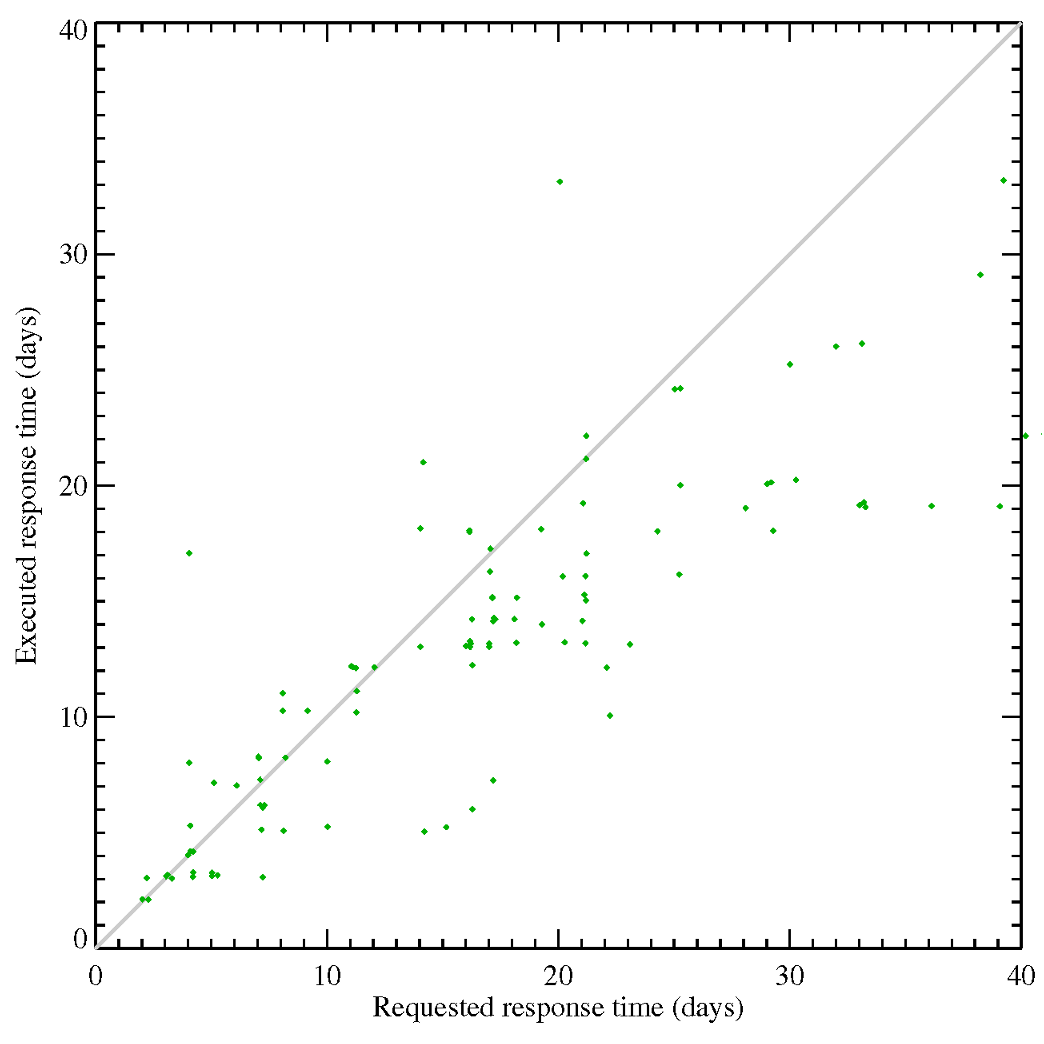Review and Implementation of Target of Opportunity and Director’s Discretionary Time Observations
Introduction
Hubble has the capability to accommodate observations of newly-discovered transient objects that require rapid-turnaround observations. This document describes the procedures followed in determining how to implement such observations.
Scheduling Hubble
The Hubble observing schedule is constructed on a weekly basis. Individual visits are drawn from the long-range plan (LRP) and combined to maximize observing efficiency. The process starts at STScI on a Thursday, with the schedule, the Science Mission Specification (SMS), transferred to Goddard the following Thursday, which is in turn followed by the first observation scheduled for Sunday evening. There is therefore a 17-day period, the 10-day SMS preparation and the subsequent week of actual observations, where adding an observation of a transient source requires re-building the schedule. The situation is seldom as simple as a one-for-one swap; generally, multiple programs are affected. The impact obviously increases through the building process, with changes during the observing week requiring an intercept of the executing SMS. Full details on the HST scheduling process are included in the ISR SMO 2020-01 “Recommendations for optimizing rapid ultraviolet HST observations of gravitational wave optical counterparts” (https://arxiv.org/ftp/arxiv/papers/2002/2002.09392.pdf).
Reviewing rapid response observations
Observations of transients can be requested through two avenues: Target of Opportunity (ToO) programs, which are reviewed and recommended by the annual Telescope Allocation Committee (TAC); and Director’s Discretionary Time (DDT) programs, which are submitted during the cycle.
For ToO observations, the request for activation will be reviewed to ensure that the observing parameters and science are consistent with those approved by the TAC. The Phase II APT file is already in place, although it may require modifications to accommodate the particular characteristics of the target.
For DDT observations, the Phase I proposal is sent for review to several external (to STScI) experts in the field. Their recommendations are compiled by the DDT team in science policies and passed on to the Director for approval. The Phase II is requested if the program is approved. The review process generally takes from ~3-10 days, depending on the urgency of the request. Under exceptional circumstances, a proposal may be sent to the Director for approval without external review; such cases are very rare, and the community is strongly encouraged to submit ultra-rapid response programs as ToOs to minimize delays.
Scheduling rapid response observations
Adding an observation of a transient requires replacing a currently-scheduled observation of another science program. Any activation involves a trade in science achieved versus science deferred or even lost entirely.
Requests for rapid response observations provide very limited opportunity for interactions with the PI. It is absolutely crucial that both ToO and DDT programs provide clear specifications of when the observations need to be scheduled, of the flexibility in scheduling, and how the science return depends on when the observations are scheduled. This information needs to be included in the submitted proposal in the Special Requirements section.
In brief, proposers should
- Limit observing constraints (orientation, timing) to those essential to achieve the science goals. Any constraint impacts schedulability, and proposals that set unrealistically tight constraints may not be schedulable.
- Be very clear at the outset on the flexibility of timing constraints.
- Wherever possible, avoid submitting ToO triggers or DD proposals on a Friday or a weekend.
On receipt of either the ToO activation or the DD submission (prior to approval), the schedulers examine the upcoming observing plan to determine likely scheduling opportunities. That process takes technical considerations into account, such as the current observatory performance, anomalies, observational constraints, upcoming observatory housekeeping, and staff availability. Observational constraints (e.g., specific timing and orientation in the Phase II) impact the way the observation is placed relative to the extant schedule and the fixed aspects of the HST orbit, such as occultation and passage through the South Atlantic Anomaly (SAA). Housekeeping activities optimize the performance of the observatory generally, such as flight software (FSW) updates, or assist the observation in question, such as the periodic onboard attitude determination (OBAD), which gives additional information to the pointing control system. The HST Mission Office is closely involved in these decisions.
In addition, Hubble’s schedule includes many time-critical or highly constrained observations, such as exoplanet transits, measurements of Solar System phenomena, observations requiring strict orientation constraints, or coordinated observations with other observatories. Displacing any observation requires consideration of how easily that observation can be re-scheduled, and of the consequent science impact on that program. If necessary, the science policies group will be asked to adjudicate on the proposed trade.
Execution times for DD and ToO programs
Figure 1 shows the time between the Phase I proposal submission and the first observation for all DD programs accepted from 1/1/2021 through 11/1/2023. All programs were peer reviewed by community experts, typically requiring at least one week. Three programs (labelled 1-3) requested disruptive activations, with execution times of 11, 13 and 13 days respectively.
ToO programs do not require additional external reviews before execution, although there is a check to verify that the activation is consistent with the TAC-accepted program. Figure 2 compares the actual response time versus the requested response time for ToOs executed since 2020, for the subset of ToOs with clear records of a requested response time. In most cases, the executed times meet or exceed the request. The fastest response times are 2-5 days, significantly faster than DDTs and reflecting the fact that these observations are pre-specified and all reviews are internal to STScI.
Proposers who require rapid turnaround times of less than 7 days should submit ToO proposals to the annual TAC; experience shows that that response time is not feasible for DDT proposals.
Communications with the Principal Investigator
STScI only communicates with the PI of a science program when necessary. This policy holds for rapid response observations. The PI will be informed of outcome of either a ToO activation request or a DDT program submission. There is only limited communication regarding the final scheduling decision since that involves technical considerations regarding observatory operations and science trades with other HST programs.

